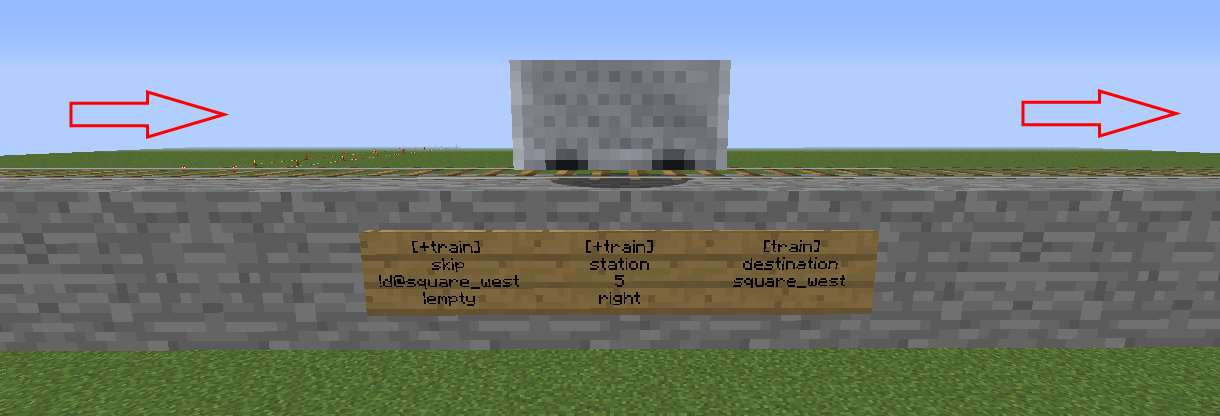//Skip
Jump to navigation
Jump to search

Bergerkiller (talk | contribs) (Add bit about skip flter) |
Bergerkiller (talk | contribs) (Marked this version for translation) |
||
| Line 24: | Line 24: | ||
* Third and fourth lines: [[Special:MyLanguage/TrainCarts/Signs/Statements|statements]] (AND-ed together) for when to activate the skip sign. It is possible to put | in front of the second statement so that the two are OR-ed together instead. Leaving both lines empty makes the skip sign activate all the time. | * Third and fourth lines: [[Special:MyLanguage/TrainCarts/Signs/Statements|statements]] (AND-ed together) for when to activate the skip sign. It is possible to put | in front of the second statement so that the two are OR-ed together instead. Leaving both lines empty makes the skip sign activate all the time. | ||
=== Filter === | === Filter === <!--T:8--> | ||
On the second line of the skip sign a filter can be added before any skip offsets/counts. This makes the skip mechanism only ignore signs whose second line starts with the filter specified. The filter is case-insensitive. For example, the following skip sign skips the very next station sign, but ignores non-station signs: | On the second line of the skip sign a filter can be added before any skip offsets/counts. This makes the skip mechanism only ignore signs whose second line starts with the filter specified. The filter is case-insensitive. For example, the following skip sign skips the very next station sign, but ignores non-station signs: | ||
<!--T:9--> | |||
{{sign|[+train]|skip station 0 1|}} | {{sign|[+train]|skip station 0 1|}} | ||
Revision as of 08:51, 27 September 2022
Introduction
Skip sign causes the train to skip one or more signs further up ahead based on statements similar to the switcher sign. It can be used to make trains skip a station sign when a certain destination is not set, for example.
Syntax
- First line: [train] or [cart]. When the sign to be skipped works on a per-cart basis, using [cart] instead of [train] can be better. In general [train] is all you'll need. Like with other signs, redstone power matters. This means the skip sign is only active when powered by redstone. You can use [+train] or [+cart] to always power it.
- Second line: skip, which without further arguments will skip the very next sign the train crosses. When followed by one number, the number sets the number of signs the train has to cross until the sign is skipped. When followed by a second number, the second number sets the number of signs to skip. In the example, a single sign will be skipped after having crossed two signs. A non-numeric sign filter can also be specified.
- Third and fourth lines: statements (AND-ed together) for when to activate the skip sign. It is possible to put | in front of the second statement so that the two are OR-ed together instead. Leaving both lines empty makes the skip sign activate all the time.
Filter
On the second line of the skip sign a filter can be added before any skip offsets/counts. This makes the skip mechanism only ignore signs whose second line starts with the filter specified. The filter is case-insensitive. For example, the following skip sign skips the very next station sign, but ignores non-station signs:
Example

Trains come from the left and first hit the powered ([+train]) skip sign. When the train does not have destination square_west set or ( | ) is empty, the skip sign is activated and skips the very next sign. In this case that's the station sign. As a result, trains not meant for this station will cross the station sign without being stopped for 5 seconds.
